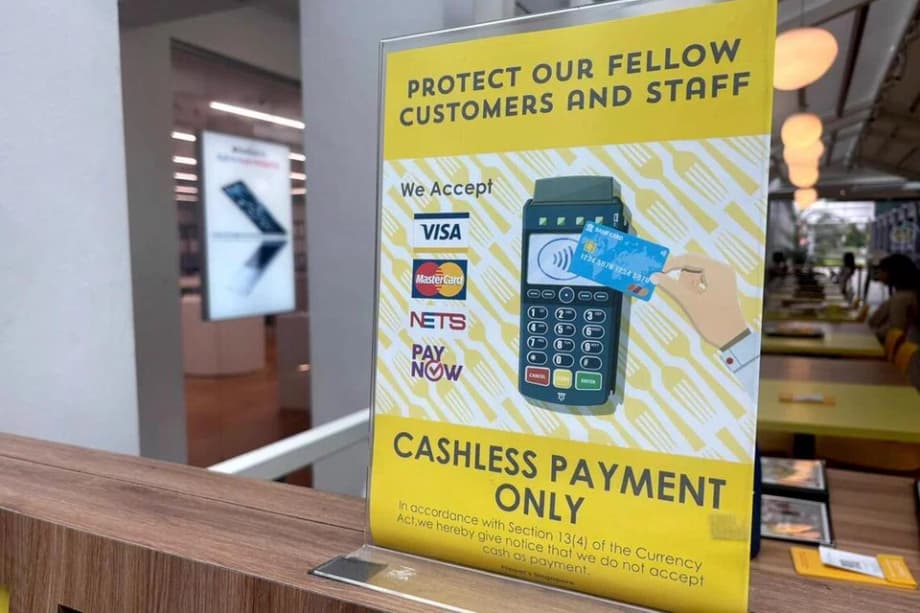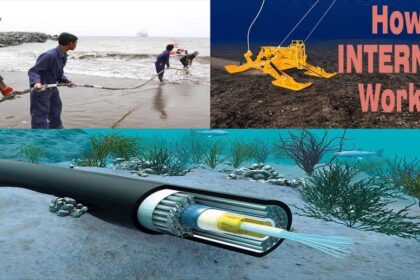Why cashless only checkout is spreading across Singapore
Across Singapore, more shops have put up cashless only signs. The change sped up during COVID 19 when hygiene and speed became priorities, and many retailers never switched back. The move also reflects years of investment in a national digital payments backbone, from PayNow and SGQR to grants that helped smaller merchants adopt terminals and QR readers. For many store owners, cashless checkout has become simpler, faster and cheaper to run than handling notes and coins.
From coins to QR codes
Before the pandemic, it was common to see cash only signs at coffee shops and small stalls. Today, QR stickers, contactless taps and mobile wallets are standard at most counters. A national QR standard launched in 2018 combined many wallet schemes into one code, so merchants could accept multiple apps without juggling different displays. Banks rolled out instant transfers via mobile number. Payment providers competed on fees. Those shifts lowered barriers for small businesses that previously hesitated to buy point of sale systems.
Recent checks across several central malls found about one in seven shops that now take only non cash payments. Food and beverage brands are prominent: tea chains, bakeries and fast casual kiosks are among those that moved entirely to cards, QR or wallet taps. Some global coffee outlets in Singapore accept only cashless at selected branches, while keeping cash acceptance at stores that serve tourists or elderly regulars. Smaller chains have also gone fully digital except at locations with many students who may not have cards yet.
The business case retailers see
Store operators describe a clear set of gains. Digital payments cut the time at the till, keep queues moving during the lunch rush and reduce errors when calculating change. Cash floats, end of day counting and bank runs vanish. Shrinkage from theft falls because less cash sits in drawers. Hygiene improved during the pandemic and remained a selling point for food handlers. On cost, QR based acceptance often carries lower merchant charges than traditional card networks, which helps hawkers, kiosks and micro businesses keep margins.
Who gets left out and why
For many shoppers, this new normal is easy. For others, it is a barrier. Three groups feel it most: teenagers who do not yet have their own debit cards, seniors who find e payments confusing or risky, and migrant workers or domestic helpers who may not hold local cards or bank accounts. Their experiences show how a convenience for most can create friction for some.
Teenagers without cards
When a store goes cashless only, minors who rely on pocket money can be turned away. Students under 16 often do not have personal debit cards. Some can pay through school linked tools or youth wallets with parental approval, but that coverage is uneven. Teens describe being unable to buy a drink at a favorite cafe or a movie ticket with friends after policies changed. Many say they plan to sign up for their first bank card the moment they are eligible at 16, yet that still leaves a gap during the younger secondary school years.
Seniors wary of scams and complex steps
Older residents who have long used cash can feel stressed at a cashless only counter. Some struggle to set up PayNow or to link cards to a phone wallet. Others worry about scams and prefer the certainty of notes and coins. Being told that cash will not be accepted can be embarrassing, especially when a queue forms. Seniors often say they would return to shops that accept cash, or they ask for patient guidance so they can learn the steps without pressure.
Migrant workers and domestic helpers
Many migrant workers receive salaries in bank accounts and can use QR payments, yet gaps remain. Domestic helpers, for instance, may not have local debit cards, or they may prefer to keep expenses in cash to manage remittances home. In a cashless only line, some ask strangers to pay first and then reimburse in cash. That is awkward and not always safe. For workers with limited data access or older phones, wallet apps and authentication steps can also be a hurdle.
Singapore by the numbers
Singapore has one of the highest adoption rates of cashless payments in Southeast Asia. Most merchants, large and small, now accept at least one digital option. Cards remain the most common method for many shoppers. Instant transfers via PayNow are widely used, and QR payments at stalls have become routine. Survey data shows younger consumers embrace digital tools fastest, often heading out with just a phone. At the same time, a sizeable share of people still use cash in daily life, especially for small buys and as a budgeting aid.
Research also indicates a shift on the supply side. A large portion of small businesses have reduced or removed cash handling at the counter. Owners cite faster checkout, better reconciliation and lower risk. Yet consumers say they will walk to another shop if they cannot pay the way they prefer. The gap between shoppers who still carry cash and outlets that no longer accept it is now a visible friction point in certain malls and food courts.
Reliability and resilience remain weak points
Going fully digital introduces a single point of failure. When a bank or network suffers an outage, stores that cannot take cash may be stuck. Singapore experienced several high profile banking disruptions in recent years, causing QR transfers, wallet top ups and even some card transactions to fail for hours. Merchants caught in a cashless only setup reported lost sales and angry queues. Shoppers who rely on one app faced a scramble for workarounds.
This is why many technologists and business owners argue for redundancy. Keeping more than one digital rail reduces the risk that a single provider outage will cripple payments. Accepting at least one offline capable method, or keeping a small cash float to handle exceptions during incidents, adds resilience. For food operators, a manual tab system for a temporary period can get through a lunchtime outage, then settle bills once systems return. Training frontline staff to manage these scenarios calmly helps keep customers on side.
What a resilient setup looks like
- Support multiple payment rails, for example both cards and PayNow QR, not only one app.
- Maintain a small cash float for contingencies, with clear guidance on when to use it.
- Adopt offline capable stored value options where practical, such as transit linked cards for small items.
- Prepare a manual fallback process for short incidents, such as recording orders and settling once systems return.
- Post clear signage so customers know what you accept and what to do during disruptions.
- Reconcile exceptions promptly to avoid disputes, and review incident logs to improve procedures.
Rules, rights and what merchants can choose
Legal tender status means the central bank recognizes notes and coins for settling debts. It does not force private shops to accept cash for purchases in all cases. In Singapore, retailers generally may set the payment methods they accept as long as they inform customers. That is why both cash only and cashless only signs exist. Public facing services, such as transport, have their own policies and have moved steadily to digital fares and top ups. Tourist heavy areas tend to keep cash acceptance because visitors may not have local wallets.
Government agencies continue to push inclusion alongside digital adoption. Grants helped smaller firms adopt terminals and QR acceptance. The national QR standard made it simpler for both sides of the counter. Digital ambassadors and community centers run lessons to help seniors use bank apps and recognize scams. Schools and banks offer youth accounts and spend tracking tools. The focus is to bring those less comfortable with technology along, not leave them behind as the majority moves on.
International comparisons and lessons
Several countries offer cautionary and encouraging examples. Sweden embraced digital payments fast, yet later required banks to ensure access to cash services in each region to avoid excluding rural and older residents. China’s super apps made QR payments mainstream for all ages through everyday utility. Japan has promoted digital salary payments and a national cashless program, but adoption remains mixed because many businesses still prefer familiar routines and worry about system costs. India’s UPI built a free, instant and interoperable network for bank to bank transfers. It scaled to billions of monthly transactions by making it easy for small merchants and everyday people to use a simple QR and a phone.
There are regulatory choices too. Some US cities require shops to accept cash to prevent discrimination against unbanked residents. Singapore has not taken that route, preferring a market led approach with strong public education and support. The thread that runs through successful models is clear. Keep payments simple for small merchants, make it safe and cheap for households to join, and maintain backup options so the system keeps working when one part fails.
Practical tips for consumers
For teenagers
Ask a parent or guardian about youth bank accounts that come with a debit card at age 16. Until then, consider a student wallet platform linked to a parent account or a school program that allows contactless payment at canteens and selected merchants. Keep a small amount of cash in your bag in case a wallet app fails or a store only accepts cash. Learn to spot official merchant QR codes and verify payee names before sending money.
For seniors
Start with one trusted bank app and one method, such as PayNow using a mobile number. Practice with a family member at a quiet time, not at a busy counter. Use strong passwords and avoid clicking payment links sent by strangers. Turn on transaction alerts so you can confirm each payment. Keep a basic wad of notes for clinics, market stalls and backup. If a shop will not accept cash and you are not ready to pay by phone, ask staff politely for help, or choose a nearby store that accepts cash while you build confidence.
For foreign domestic workers and migrant workers
Open a local bank account if you can and activate mobile banking with alerts. If you prefer not to hold a credit card, consider a prepaid debit card that an employer can top up via PayNow or bank transfer. For everyday travel and small buys, a transit stored value card is widely accepted and can be topped up at machines. For remittances, compare fees across digital services, and confirm recipient details carefully before sending.
For tourists
Carry a small amount of Singapore dollars for places that only accept cash or for occasional minimum spend rules on cards. International cards are widely accepted at malls and attractions. Many stalls accept QR payments, but you usually need a local wallet linked to a bank account. Buying a transit stored value card helps with public transport and some convenience purchases. If you see a cashless only sign and do not have a compatible method, staff can often point you to the nearest ATM or store that accepts cash.
What to Know
- Cashless only policies are growing across food and retail, driven by speed, hygiene and lower operating costs.
- QR based acceptance and national tools like SGQR and PayNow made it easier and cheaper for small merchants to go digital.
- Teens without cards, seniors who prefer cash and some migrant workers are most affected by cashless only counters.
- Most merchants accept digital payments, and many consumers use them daily, yet a large share still uses cash for some purchases.
- Bank or network outages can halt sales at cashless only stores, so redundancy and simple fallbacks improve resilience.
- Shops in Singapore can generally choose their accepted methods, while public programs focus on inclusion and training.
- Experiences abroad show the value of keeping backup cash access while scaling simple, interoperable digital rails.
- Consumers can prepare with youth cards or wallets, senior friendly training, prepaid debit options and a small cash backup.












